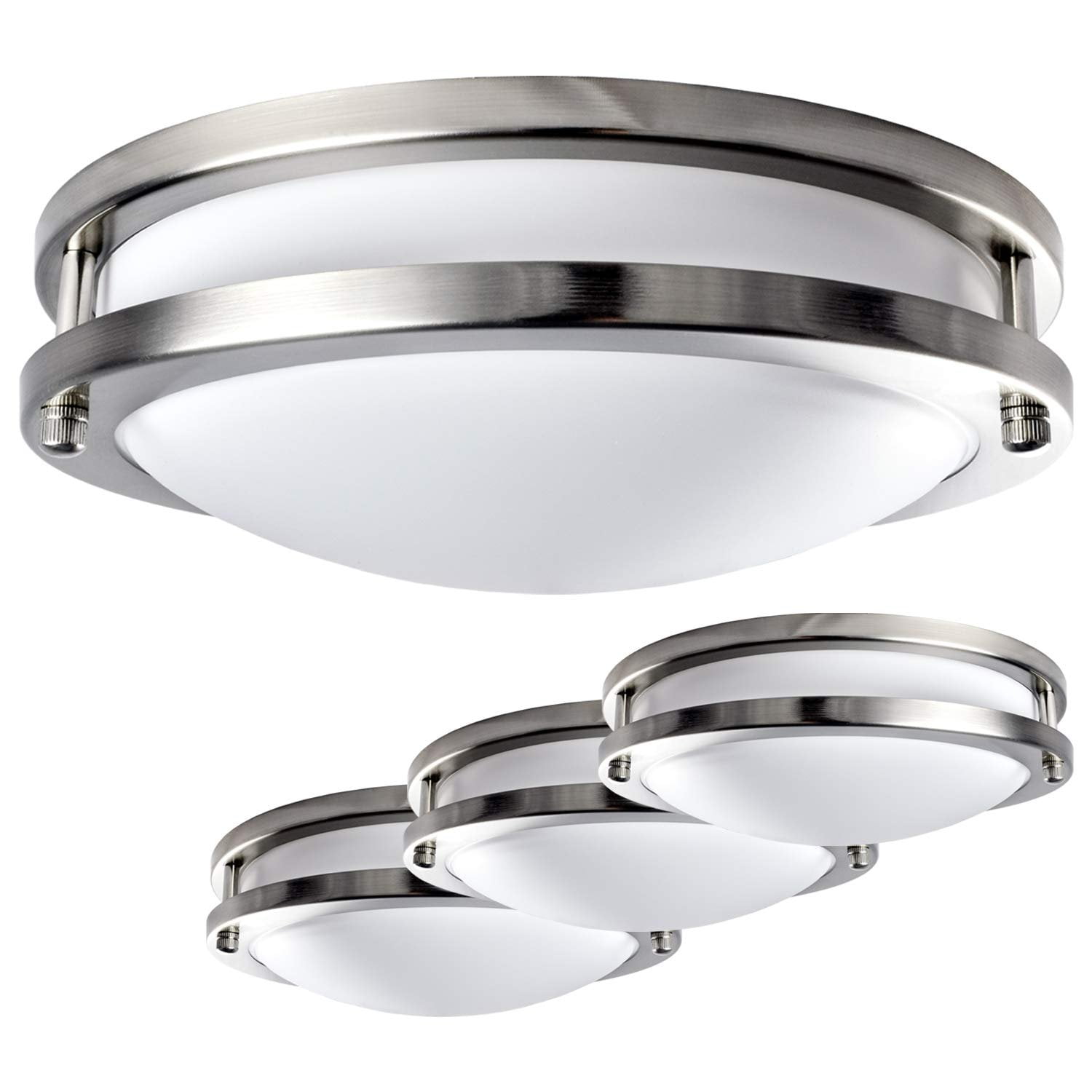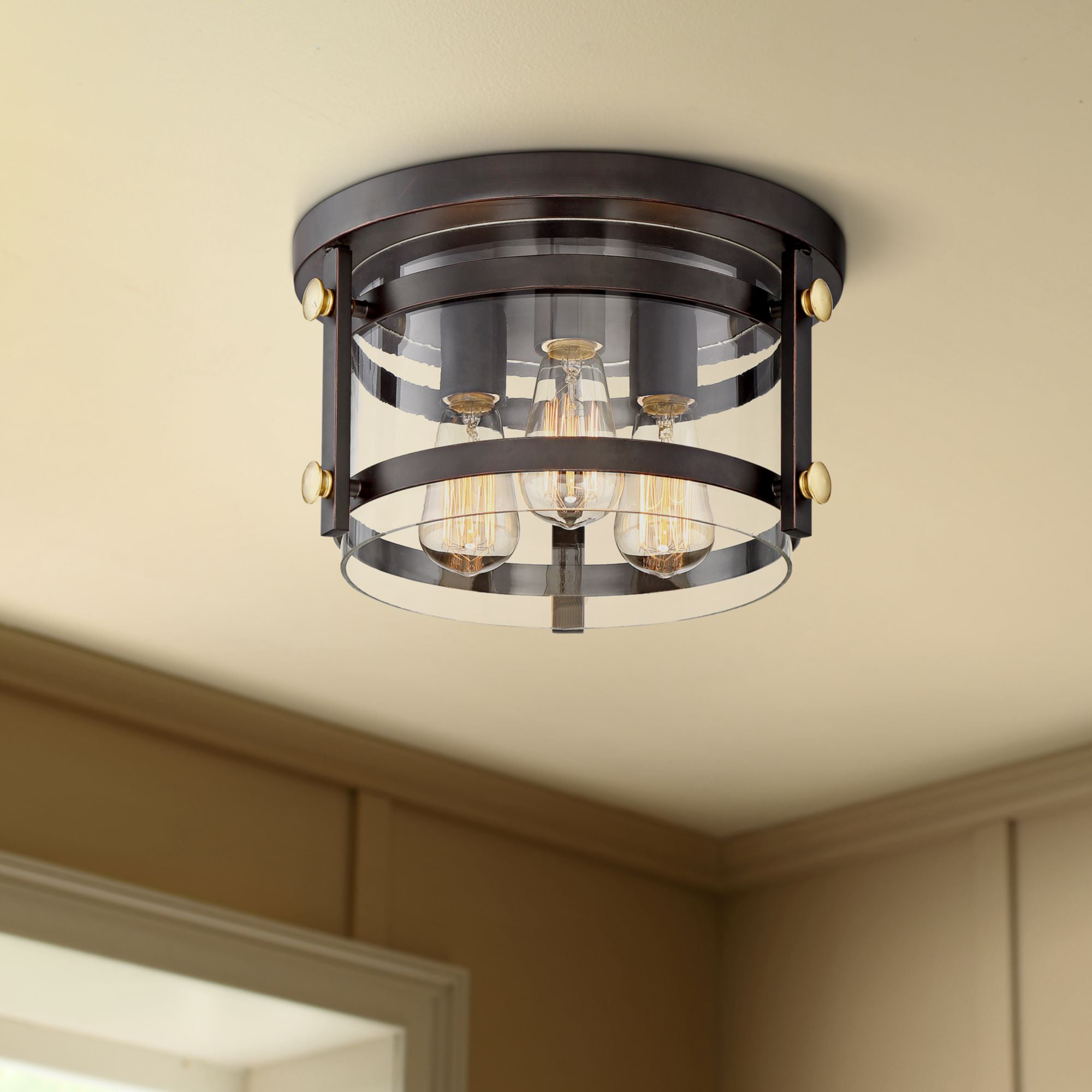Bathroom Flush Mount Lighting Styles

Bathroom flush mount lighting – When selecting flush mount lighting for your bathroom, there are several popular styles to consider. Each style offers unique features and benefits, making it essential to choose the one that best suits your bathroom’s design and functionality.
Flush mount lighting is a versatile option that can complement a wide range of bathroom styles. From traditional to modern, there is a flush mount lighting style to match any décor.
Contemporary Flush Mount Lighting
Contemporary flush mount lighting fixtures are characterized by their clean lines and minimalist design. They often feature geometric shapes and metallic finishes, such as chrome or brushed nickel. Contemporary flush mount lighting is a great choice for modern bathrooms or those with a transitional style.
The gentle glow of bathroom flush mount lighting, casting an ethereal glow upon the space, invites contemplation. However, to ensure optimal air quality, it’s crucial to address the question: should bathroom exhaust fan be vented in attic ? Proper ventilation prevents moisture and odors from accumulating, creating a healthier and more pleasant environment.
By directing exhaust outside, flush mount lighting’s radiance complements a refreshed and revitalized bathroom.
One of the benefits of contemporary flush mount lighting is that it can help to create a sense of spaciousness in a small bathroom. The clean lines and simple design of these fixtures can make a small bathroom feel larger and more open.
As the bathroom flush mount lighting casts a warm glow upon the vanity, its soft illumination echoes the festive spirit of Grandin Road Christmas. Like the twinkling lights that adorn holiday trees, these fixtures illuminate the space with a touch of cheer, creating a cozy sanctuary for both daily routines and festive gatherings.
- Geometric shapes, such as squares, rectangles, and circles, are common in contemporary flush mount lighting.
- Metallic finishes, such as chrome and brushed nickel, are popular choices for contemporary flush mount lighting.
- Contemporary flush mount lighting can help to create a sense of spaciousness in a small bathroom.
Here are some examples of contemporary flush mount lighting fixtures:
- The “Geo” flush mount light from West Elm is a square-shaped fixture with a brushed nickel finish.
- The “Cylinder” flush mount light from Restoration Hardware is a cylindrical fixture with a chrome finish.
- The “Orb” flush mount light from Pottery Barn is a round fixture with a white glass shade.
Functionality and Features of Bathroom Flush Mount Lighting

Bathrooms are functional spaces that require adequate lighting for various tasks, from grooming to applying makeup. Flush mount lighting, installed directly onto the ceiling, offers a practical and stylish solution for bathroom illumination.
When selecting flush mount lighting for bathrooms, consider the following functional aspects:
Brightness
- Adequate brightness is essential for clear visibility and safety in bathrooms.
- Measure the square footage of the bathroom and consult lighting guidelines to determine the appropriate wattage or lumen output.
- Consider the size and layout of the bathroom, as well as the natural light available.
Color Temperature
- Color temperature refers to the warmth or coolness of light.
- Warm white (2700K-3000K) creates a cozy and inviting atmosphere, while cool white (4000K-5000K) provides a more energizing and brighter light.
- Choose the color temperature based on the desired ambiance and the specific tasks performed in the bathroom.
Beam Angle
- Beam angle determines the spread of light from the fixture.
- A wide beam angle provides diffuse and even illumination, while a narrow beam angle creates a more focused light.
- Select the beam angle based on the size and shape of the bathroom, as well as the desired lighting effect.
Installation and Maintenance of Bathroom Flush Mount Lighting

Installing and maintaining bathroom flush mount lighting is a straightforward task that can be completed with minimal effort. By following the steps Artikeld below, you can ensure that your bathroom lighting is installed correctly and remains in good working order for years to come.
Tools and Materials, Bathroom flush mount lighting
Before beginning the installation process, gather the following tools and materials:
- Phillips head screwdriver
- Wire strippers
- Electrical tape
- Flush mount lighting fixture
- Mounting screws
Installation Steps
Follow these steps to install your flush mount lighting fixture:
- Turn off the power to the bathroom at the circuit breaker panel.
- Remove the old lighting fixture (if applicable).
- Connect the wires from the fixture to the wires in the ceiling electrical box. Black wires connect to black wires, white wires connect to white wires, and green or bare copper wires connect to ground wires.
- Wrap electrical tape around the wire connections to secure them.
- Mount the fixture to the ceiling electrical box using the mounting screws.
- Turn on the power at the circuit breaker panel and test the light.
Maintenance
To maintain your bathroom flush mount lighting, follow these tips:
- Clean the fixture regularly with a damp cloth.
- Replace the light bulbs as needed.
- Inspect the fixture for any loose wires or connections.
- If you notice any problems with the fixture, contact a qualified electrician.
Troubleshooting Common Issues
If you encounter any problems with your bathroom flush mount lighting, try the following troubleshooting tips:
- If the light doesn’t turn on, check the circuit breaker or fuse to make sure it hasn’t tripped or blown.
- If the light flickers, check the wire connections to make sure they are tight.
- If the fixture is making a buzzing noise, it may be a sign of a loose wire or a faulty ballast.